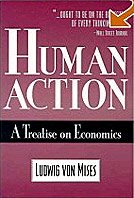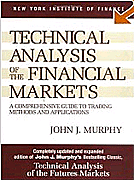Doug Casey: Gold? What Gold?
Excerpt from "The Room", a Casey Research subscribers newsletter:
"..Working apart from the investment multitudes, a very small minority of investors over the past few years have been building portfolios of precious metals and Canadian precious metals stocks. It’s a minority I’m happy to be a part of, as it allows me peace of mind and the considerable advantage of viewing these crises somewhat dispassionately.
That doesn’t mean I’ll enjoy standing on the sidelines and watching the impact of a monetary crisis on the lives of the unprepared. Of course not. Yet I would be a fool, having recognized a crisis shaping up, not to take the fairly obvious steps to profit.
Which brings me to the opportunity that the crisis is carrying on its back.
For any number of reasons, but first and foremost its use as money in all the world’s cultures, throughout all recorded history, gold has begun to find renewed favor with in-the-know investors as the currency of last resort.
Make no mistake, despite gold’s rise from its $255 low in April of 2001 to over $650 as I write, so far only the thinnest of trickles, a minor fraction of global capital, has made it into gold. When the flight to safety really heats up, the real fun will begin, and the price of gold won’t just add dollars, it will add digits.
If that sounds like hyperbole, remember that, unlike the U.S. dollar, which can be created at the speed of light, the available supply of gold is finite and is painfully slow to change.
You can’t print gold the way you print paper money. And you can’t just build a gold mine the same way you might build a Starbucks almost anywhere and on short notice. Instead, you first have to find a promising ore body—which is, without exaggeration, like finding a needle in a haystack… a haystack buried “somewhere” in the earth’s crust.
Then you need to go through the immensely complex and expensive exercise of confirming that the ore body is economically viable. Then, years after you started exploring, you can start the even more time-consuming and expensive process of actually building your mine. That entails finding a labor force, bringing in power, roads, mills, etc., etc… with every step hindered by environmentalists waving court injunctions.
The long and short is that there are hardly any gold mines of size scheduled to come on stream… and we are not talking about just over the next year or two, but ever. Most people in the know see annual gold production falling from here on.
For proof, there was recent news out of South Africa, the most world’s prolific gold producer. Despite the loud incentive of higher gold prices, South African gold production in 2006 dropped to the lowest level since 1922.
And above ground, there just isn’t much gold to go around, either. The U.S. government, for example, possesses the world’s largest gold reserves… and those reserves amount to only about $170 billion at today’s prices… not even a rounding error on the trillions of dollars in debt the government has guaranteed.
Put simply, the amount of gold available to investors and central banks is like the number of beachfront home sites at Malibu—it’s not going to change much. As a result, when the rush for the lifeboats begins in earnest, the upward pressure on gold will be unimaginable. As will be the profits for anyone who acts now, ahead of the crowd."
"..Working apart from the investment multitudes, a very small minority of investors over the past few years have been building portfolios of precious metals and Canadian precious metals stocks. It’s a minority I’m happy to be a part of, as it allows me peace of mind and the considerable advantage of viewing these crises somewhat dispassionately.
That doesn’t mean I’ll enjoy standing on the sidelines and watching the impact of a monetary crisis on the lives of the unprepared. Of course not. Yet I would be a fool, having recognized a crisis shaping up, not to take the fairly obvious steps to profit.
Which brings me to the opportunity that the crisis is carrying on its back.
For any number of reasons, but first and foremost its use as money in all the world’s cultures, throughout all recorded history, gold has begun to find renewed favor with in-the-know investors as the currency of last resort.
Make no mistake, despite gold’s rise from its $255 low in April of 2001 to over $650 as I write, so far only the thinnest of trickles, a minor fraction of global capital, has made it into gold. When the flight to safety really heats up, the real fun will begin, and the price of gold won’t just add dollars, it will add digits.
If that sounds like hyperbole, remember that, unlike the U.S. dollar, which can be created at the speed of light, the available supply of gold is finite and is painfully slow to change.
You can’t print gold the way you print paper money. And you can’t just build a gold mine the same way you might build a Starbucks almost anywhere and on short notice. Instead, you first have to find a promising ore body—which is, without exaggeration, like finding a needle in a haystack… a haystack buried “somewhere” in the earth’s crust.
Then you need to go through the immensely complex and expensive exercise of confirming that the ore body is economically viable. Then, years after you started exploring, you can start the even more time-consuming and expensive process of actually building your mine. That entails finding a labor force, bringing in power, roads, mills, etc., etc… with every step hindered by environmentalists waving court injunctions.
The long and short is that there are hardly any gold mines of size scheduled to come on stream… and we are not talking about just over the next year or two, but ever. Most people in the know see annual gold production falling from here on.
For proof, there was recent news out of South Africa, the most world’s prolific gold producer. Despite the loud incentive of higher gold prices, South African gold production in 2006 dropped to the lowest level since 1922.
And above ground, there just isn’t much gold to go around, either. The U.S. government, for example, possesses the world’s largest gold reserves… and those reserves amount to only about $170 billion at today’s prices… not even a rounding error on the trillions of dollars in debt the government has guaranteed.
Put simply, the amount of gold available to investors and central banks is like the number of beachfront home sites at Malibu—it’s not going to change much. As a result, when the rush for the lifeboats begins in earnest, the upward pressure on gold will be unimaginable. As will be the profits for anyone who acts now, ahead of the crowd."
Labels: bull market, Doug Casey, financial crisis, gold















![[Most Recent Quotes from www.kitco.com] [Most Recent Quotes from www.kitco.com]](http://www.kitco.com/images/live/t24_au_en_usoz_6.gif)
![[Most Recent Quotes from www.kitco.com] [Most Recent Quotes from www.kitco.com]](http://www.kitco.com/images/live/au_go_0030_ny.gif)
![[Most Recent Quotes from www.kitco.com] [Most Recent Quotes from www.kitco.com]](http://www.kitco.com/images/live/au_go_0365_ny.gif)
![[Most Recent Quotes from www.kitco.com] [Most Recent Quotes from www.kitco.com]](http://kitconet.com/charts/metals/silver/t24_ag_en_usoz_4.gif)

















0 ΣΧΟΛΙΑ (COMMENTS):
Post a Comment
<< Home